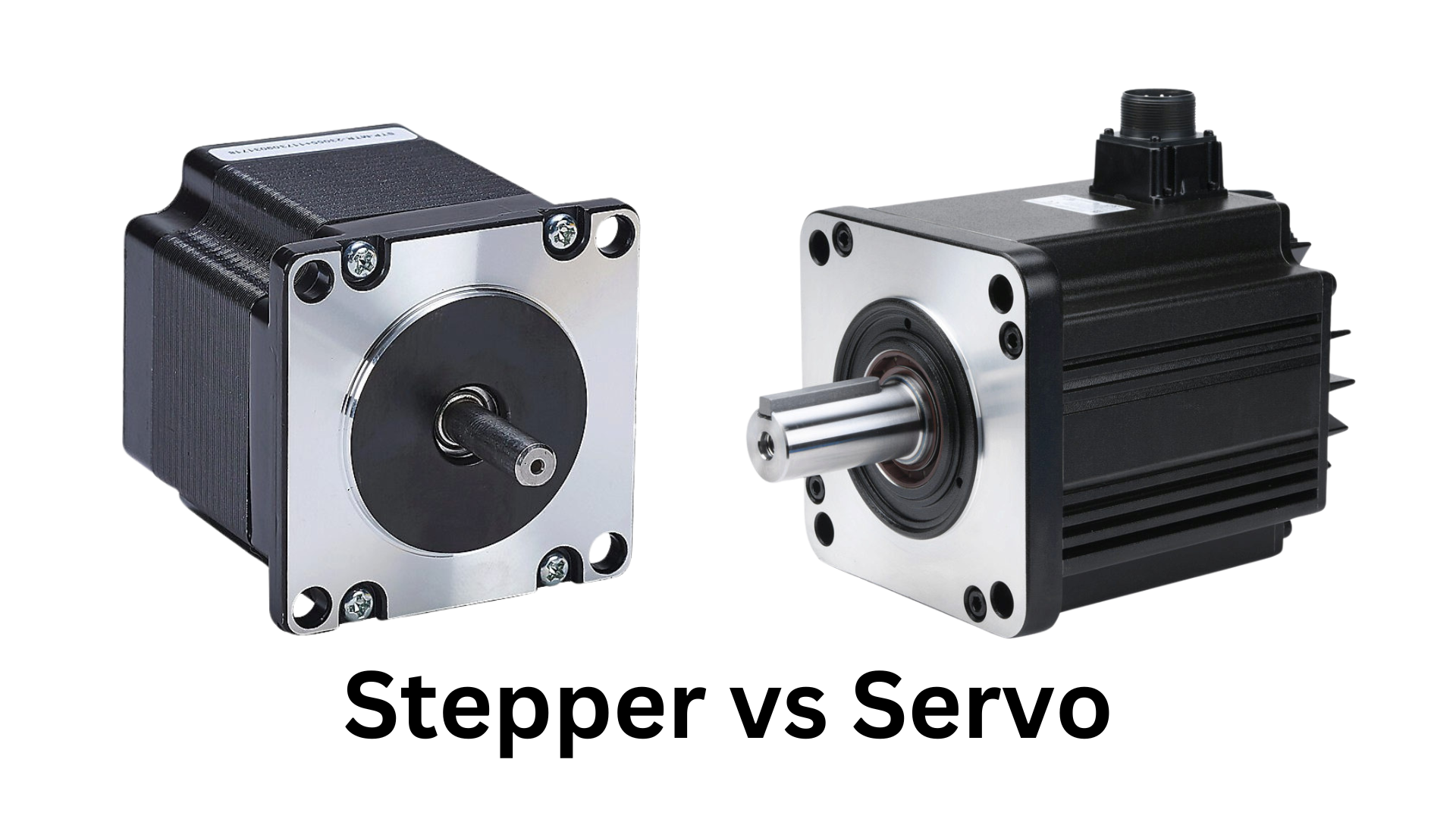What’s the difference and which is right for you?
When it comes to precision motion control in various industrial and hobbyist applications, the debate between stepper motors and servo motors is a perennial one. Both types of motors have distinct characteristics that make them suitable for different tasks. Stepper motors are known for their simplicity and reliability, providing precise control over position without the need for complex feedback systems. They operate by dividing a full rotation of the motor into a number of equal steps, allowing for consistent and repeatable movements, which is ideal for applications like 3D printers and your laser engraver. However, their torque decreases at higher speeds, and they can suffer from accuracy issues that might necessitate additional tweaking and adjustments.
On the other hand, servo motors excel in applications requiring high efficiency, speed, and torque like those found in today’s top-of-the-line laser engravers. Unlike stepper motors, servo motors use a closed-loop feedback system to ensure the motor reaches the desired position with high accuracy and responsiveness. This feedback system constantly adjusts the motor’s position, speed, and torque, making servo motors suitable for complex and dynamic operations such as robotics, automated manufacturing applications, and multi-axis laser systems. Despite their higher cost and a more complex control system compared to stepper motors, the advantages of servo motor performance and versatility often justify the investment for applications where precision and adaptability are important. Understanding the key differences between these two motor types can help engineers and makers choose the right motor for their specific needs, balancing factors like cost, complexity, and performance.
What’s a Stepper Motor?
A stepper motor is an electric motor that moves in precise, fixed increments, known as steps. Each rotation of the motor is divided into these equal steps, allowing for accurate control of the motor’s position without needing a complex feedback system. Their simplicity, reliability, and ability to maintain position make them ideal for tasks that need consistent and repeatable movements. They are a perfect low-cost solution for the foundation of your laser engraver.
When your laser engraver moves the cutting head to a specific location or along a design path the laser controller will use a predetermined known number of steps per inch to count the number of steps required to move the laser cutting head into the right position or along the desired design path.
Stepper Basics:
- Lower overall system cost.
- Simple design and control.
- Excellent low-speed performance.
- Higher step frequencies result in higher motor speeds.
- Increasing the motor’s current increases the motor’s torque.
- A technique called “microstepping” increases system resolution.
What’s a Servo Motor?
A servo motor is a type of electric motor that is designed for precise control of position, velocity, and acceleration. It operates using a closed-loop feedback system, which means it constantly monitors its output to match the desired position or speed. This feedback allows the servo motor to make accurate adjustments in real-time, ensuring high precision and responsiveness. Servo motors are commonly used in applications requiring precise and dynamic motion, such as robotics, automated manufacturing, and camera focus mechanisms. Their ability to provide consistent performance and adapt to changing demands makes them highly versatile and reliable.
The servo motor works by using a feedback system that consists of a servo motor, a feedback sensor (typically called an encoder), and a drive controller. The controller sends a command signal to the motor, specifying the desired position and speed. As the motor operates, the feedback sensor continuously monitors its actual position and speed and sends this information back to the controller. The controller compares this feedback with the command signals and makes adjustments to the motor’s power to correct any discrepancies. This is called a closed-loop system and allows the servo motor to achieve accurate and responsive movement, making it ideal for applications requiring high speed and precision like your laser engraver.
Servo Basics:
- Higher overall system cost.
- Excellent high-speed performance.
- Relatively more complex design and control.
- Higher torque – resulting in faster direction changes.
- Greater speeds and acceleration than stepper motors.
- High-resolution encoders can provide thousands, or millions, of counts per revolution.
Final Thoughts
When deciding whether to use a servo motor or a stepper motor in your laser engraver, it’s important to consider the specific requirements of your engraving tasks. For most laser engraving applications, where precise positioning and repeatable movements are essential, a stepper motor is often the preferred choice. Stepper motors provide reliable and consistent performance, making them suitable for the detailed and intricate work typically associated with laser engraving. Their cost-effectiveness and simplicity in setup also make them an attractive option for many small-scale commercial engravers such as the Glowforge and xTool laser engravers.
However, if your laser engraver demands higher speeds, dynamic performance, or needs to handle variable loads with greater efficiency, a servo motor might be the better option. Servo motors offer superior control and accuracy through their closed-loop feedback systems, ensuring that even complex and high-speed engraving tasks are executed with precision. Although they come at a higher cost and require more complex setup, the advantages in performance can justify the investment for professional or high-demand applications. High performance system such as Trotec and Epilog often use servo motors to achieve superior system performance.
Ultimately, the choice between a servo and a stepper motor for your laser engraver depends on your specific needs, balancing factors such as precision, speed, cost, and complexity.
Writer Anthony Isaac can be reached via the Contact Me page.


